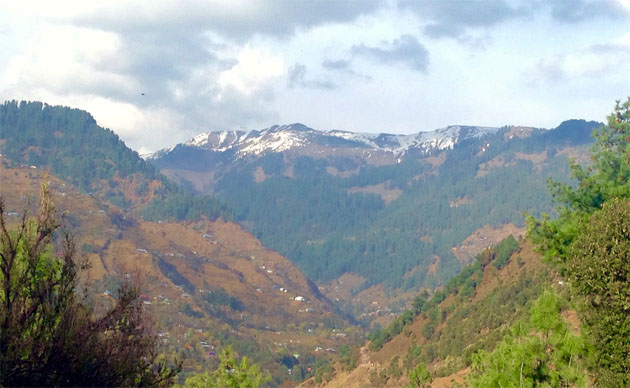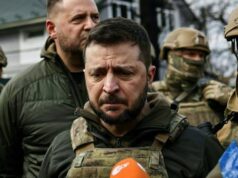Pir Panjal’s Religious & Demographic divide:– pandering to Pakistan’s deviltry

By Colonel Satish Singh Lalotra
‘I am the sculptor of my time-its past, present & future’
—Anonymous.
The recent spate of terrorist activities in the erstwhile state of Jammu & Kashmir bringing in its arc of fire an entire spectrum of environment to include the security forces, local villagers, visitors to the area as well as UT administration’s efforts at reconciliation has put paid to all the speculations doing rounds that the region south of these formidable ranges are an oasis of peace and tranquility. It is not that this area of ‘Pir Panjal’ had retained the image of holier than thou in the long list of militant incidents which were confined to the north of these ranges as had been made out all along. In the early days of May 2003, the Indian army with a sizable numbers of Gujars and Bakerwals acting as porters and route guides in the Surankote forests in a place called as ‘Hillkaka’ on the south -eastern slopes of the Pir Panchal range which separates Srinagar valley from Jammu under ‘OP Sarp Vinash’ had taken on approximately 100 odd terrorists. Spearheaded by 9 Para special forces ,six other units of the 163 infantry brigade and 12 sector RR , this intrepid operation was a classic example of ‘civil-military fusion’ wherein the early inputs of such a large congregation of militants holed up in the innermost recesses of Pir Panchal ranges were provided by the local Gujars/ Bakerwals. How important and successful this operation was can be gauged from the fact that the then army chief Gen NC Vij flew into the area of operations amidst the ongoing firefights at various places of these ranges to congratulate the troops on an excellent job done. ‘OP Sarp Vinash’ would not have been possible without any hard intelligence trickling in from those slopes of Pir Panchal.
The trigger to bring back the haunted memories of Pir Panjal ranges was the cowardly act of targeting the pilgrim’s bus a few days back near the town of Riasi that resulted in precious loss of lives and consequent widening of a growing chasm between the local communities by the day. The fact that the district of Riasi almost caught in a pincer by an equal percentage of both communities with 51% & 49% as Muslims and Hindus populating it, is it any wonder that the renegade elements owing allegiance to the former community even though belonging across the border go unchallenged in their movements and intent? Were these militants home grown or imported from across the border for spreading mayhem? Latest reports indicate their trail leading to the infamous TRF (Terrorist resistance front) a front organization of the LET-Lashkar -e-taiyba . Coinciding with the swearing-in- ceremony of the new government in New Delhi on 09 June the act of terror that left at least 09 dead and about 40 injured was a signal to the new dispensation at New Delhi the ability and will to strike by these anti national elements at their place of choosing. With the terrain and topography in the Pir Panjal ranges lending itself to guerrilla type of operations, it is little wonder that the handlers of these renegade elements sitting across the border have once again re-ignited a dormant sector for the last two decades into a live wire situation.
With militancy in Kashmir wilting under the pincer of sustained CI/CT operations and a graduated pro- people centric development activities, a seismic shift has been unfolding in the rugged terrains of the border districts of Rajouri and Poonch where the echoes of militancy once seemed distant. Out of the 134 militancy related killings in 2023, the Pir Panjal region accounted for 53 deaths, roughly 40%. Of these 53 people killed in the twin border districts, 19 were army personnel including a few officers. But never ever the footprints of these militants reverberated into the hinterland of district Riasi , a region famous for housing the twin Hindu religious centers of Mata Vaishno Devi and the holy cave of Shiv -Khori situated in the village Sangar , Pouni . Known as typically the gateway to Jammu region, the sudden expansion of militant related activities in the district of Riasi has ominous repercussions which can be safely traced back to having its origins in the combined goof ups by the erstwhile state governments of Jammu and Kashmir as well as the central government. A supine and lackadaisical response system by the central government to the evolving situation in the areas adjoining district Riasi, defanging of the VDCs( Village defence committees) , failure to bridge the vicious Gujjar -Pahari divide and its amalgamation with the larger Hindu population of the district and finally increased ethno linguistic communalization in and around the district that was further fanned by the likes of regional parties like the National conference (NC) and the People’s democratic party ( PDP) for their narrow political ends are some of the pointers towards this direction.
Fully aware of its limitations and a virtual grounding of its militant activities in the Kashmir region, the handlers across the borders found this area quite fertile for sowing the seeds of communal discontent that has the full potential of spilling over to the neighbouring Jammu division. Otherwise how is it possible that an incident like movement of heavily armed militants goes unrecognized in an area that has a preponderance of Hindu population wherein they position themselves for a perfect ambush on the pilgrim’s bus, execute the same with clockwork precision and do a leisurely walk away from the site? Common military knowledge only dictates that a very firm umbrella of local support unhindered by any extraneous factors, a thorough reconnaissance of the ambush site, clear fields of view and fire , with an easy ingress and egress route was facilitated by sources that remain a Gordian’s knot to be unraveled . One cannot shift the blame on Pakistan or its various mouth pieces off and on when things go horribly wrong. It would be prudent for the readers of this article to go back to the report of 2018 released to press by ‘Concerned citizen group’ (CCG) headed by the former foreign minister Yashwant Sinha which laid emphasis on the fact that there were concerted efforts to polarize the entire swathe of region beginning from Kathua till Jammu on communal lines in the coming days, with the situation quite ripe to go out of hand. Whatever be the revelations of this so called CCG headed by the former foreign minister, did the Modi Government put its entire heads together to read the fine print and at least call these observations of the report in all its sincerity howsoever trivial it may have sounded to the mandarins of power sitting at New Delhi? It would have been in fitness of all things for the Modi Government to flip back the pages of history dating back to 1947 when a spate of incidents across the newly formed ‘Radcliffe line’ unleashed a communal frenzy all across the Jammu region that prompted Mahatma Gandhi to lay blame squarely on the Maharaja, even though the latter was not remotely connected with these communal frenzies sweeping across Jammu region. The importance of history can only be realized when the lessons so derived are imbibed in the right earnest in the present milieu. Did the Modi government pay as little importance to this fact that a personality as towering as the former foreign minister Yashwant Sinha would not stake his entire reputation in fudging the report and observations of the CCG ( Concerned citizen group) just for a lark?
The fact that the simmering discontent and fault lines that existed between the Gujjars/ Bakerwals and Pahari people of Pir Panjal region since ages further fogged the transparency of events as they unfolded is no exaggeration to say the least. In such a fractional society can the security forces lean on to them for providing actionable intelligence on which to base their operations? Ironing out these socio-political tensions was the baby of various dispensations down the line of an area as sensitive as that found obtained in the shadows of Pir Panchal ranges of which the district of Riasi too formed as part of its outer fringes. Was it done with the sincerity it deserved? The readers of this article will do well to know that the dominant Pahari people which have a mix of both Muslims as also Hindu Brahamns, Mahajans, and other upper caste Hindus were never considered as one tribe as opposed to the Gujjars and Bakerwals. At the heart of this age old animosity lies the reservation issue which these Pahari people are vociferously demanding for themselves and being opposed tooth and nail by the Gujjar and Bakerwals who do not consider these Pahari people as fit for reservation being a forward caste. All of these developments have polarized the society as such in these mountains of Pir Panchal as highly fractional and non -cooperative to the governmental efforts of mainstreaming these communities in the national milieu.
As if this impasse in the society was no enough, the governments both at the center and the UT level have been adopting a very pussy footed and flip flop policy of revival of the VDCs (village defence groups) in the affected areas of militancy of Jammu region. The fact that most of these operations will have to be undertaken in treacherous terrains of Pir Panjal ranges that doesn’t lend itself easily to actionable intelligence, it would have been sensible to once again give a fresh lease of life to these defunct VDCs which would have doubly acted as eyes and ears of the area in question and also given a sense of assurance to the local population that the government cares for their well-being. Moreover whatever VDCs have been revived on ground by the UT administration doesn’t lend to a confidence building in the locals of the area. The very sight of these VDC members wielding .303 bolt action rifles by the elderly people of the villages only sends negative impressions on the militants who further get emboldened by the lack of will of both the people and the governments to take action against them. On top of it a double whammy has been served to these people by tacit denial of arms licenses as also renewal of the same on one or the other flimsy pretexts by the district administration. This selective discrimination by the past governments taking alibi of few black sheep indulging in fake arms license making should not have deterred the powers that be from applying its mind and doing the needful. All these developments have been lapped up by our adversary to further exacerbate the situation for its advantage and hence a spurt of such militant activities in the areas adjoining Pir Panjal region. In view of the aforementioned points following should be line of action for the powers that be with immediate effect-
* Immediate resolution of socio-political divide between the Gujjar Bakerwal vs the Pahari people.
* An instant revival of all the defunct VDCs, arming them with latest weapons to take on the scourge of militancy in their areas.
* An immediate revival and renewal of arms licenses of the locals with caveat that the fake license holders be debarred for life with holding of arms.
* Increased meetings of people’s representatives with the masses affected with the militancy in their areas.
The greatest weapon white men have used in the past against our people has always been their ability to ‘Divide and rule’. With these words ‘Malcolm X’ the great African-American revolutionary was trying to make the blacks understand that people in power exploit them for their gains , and then to further maintain the status -quo divide them at different levels on different issues to divert the oppressed from raising their voices against injustices & oppression. Blacks of mid-20th century were wise enough to heed the advice of ‘Malcolm X’ seriously. How many ‘Malcolm X’ will we need to stop pandering to Pakistan’s deviltry?
(The writer is a retired army officer)




